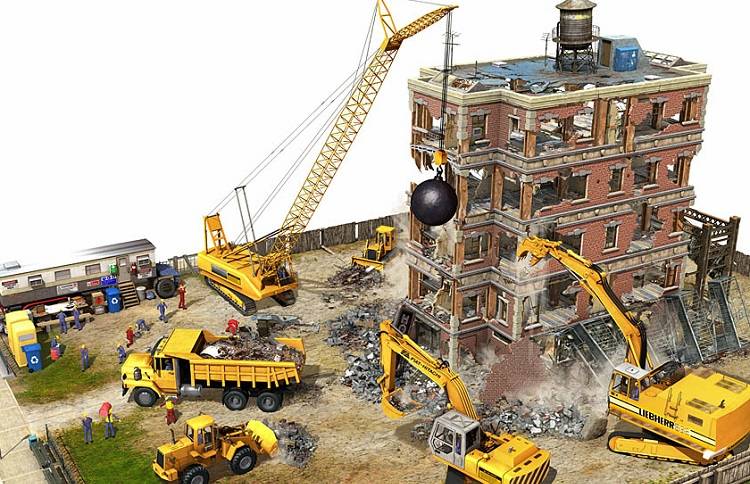
Building Demolition
Building demolition refers to the process of tearing down or destroying a structure, often to make way for new development. It involves the careful dismantling or complete destruction of a building, ensuring safety and minimizing the impact on the surrounding environment. Demolition methods can vary depending on the size and condition of the building, as well as the desired outcome. Check out Land Clearing Services
What is building demolition?
Definition of building demolition
Building demolition is the deliberate act of demolishing or dismantling a structure. It involves the controlled dismantling or complete destruction of a building using various techniques and equipment. The main objective of building demolition is to safely and efficiently remove a structure from a particular location.
Types of building demolition
There are several types of building demolition methods that can be employed depending on the specific requirements of the project. These methods include implosion, wrecking ball, and high reach demolition.
Benefits of building demolition
Building demolition offers various benefits such as creating space for new construction, improving safety in cases of structurally unsound buildings, and facilitating urban development and regeneration. It also allows for the removal of unsafe or condemned buildings, making way for new and improved structures.
How is a building demolished?
Building demolition can be carried out using different techniques, depending on the size, location, and specific requirements of the project. The three main methods commonly used are implosion, wrecking ball, and high reach demolition.
Implosion method
The implosion method is commonly used for large and tall structures. It involves strategically placing explosives throughout the building to create a controlled collapse. This method requires careful planning to ensure the building collapses inward, minimizing damage to surrounding structures.
Wrecking ball method
Another widely recognized method is the wrecking ball method. This involves using a large heavy steel ball attached to a crane to physically knock down the building. The ball swings back and forth, repeatedly hitting the structure until it collapses. This method is commonly used for smaller structures.
High reach method
The high reach method is often employed in cramped urban areas where buildings need to be demolished with precision. It involves the use of a specialized excavator with an extended arm or boom equipped with various demolition attachments to carefully dismantle the building piece by piece.

What are the different techniques used in building demolition?
Selective demolition
Selective demolition is the process of carefully demolishing specific parts or elements of a building while preserving others. This technique is commonly used in renovation projects, where certain sections of a structure need to be removed or modified without destroying the entire building.
Deconstruction
Deconstruction is a method that focuses on the careful dismantling and salvage of a building’s materials for reuse or recycling. It involves systematically taking apart a structure to recover valuable materials, such as wood, metal, and concrete, which can be repurposed for future construction projects.
Explosive demolition
Explosive demolition, as previously mentioned, involves strategically placing explosives throughout a building to bring it down. This method is typically reserved for large structures where implosion is the desired approach. It requires careful planning and expertise to ensure the controlled destruction of the building.
When is building demolition necessary?
Unsafe or condemned buildings
Building demolition becomes necessary when a structure is deemed unsafe or condemned. This could be due to severe structural damage, such as cracks, foundation issues, or instability, making the building a potential hazard to occupants and the surrounding area.
Structurally unsound buildings
In the case of structurally unsound buildings that cannot be restored or renovated, demolition is often the only viable solution. These buildings may pose a significant risk to public safety and require prompt removal to prevent any accidents or further deterioration.
Renovation or redevelopment projects
Building demolition is also necessary in renovation or redevelopment projects where an existing structure impedes the construction of a new building or hinders the desired redesign. Demolishing the existing building allows for a fresh start and the creation of a more functional and modern space.
What are the considerations for building demolition?
Environmental impact
Before any building demolition takes place, environmental impact assessments are conducted to determine the potential effects on air quality, water systems, and wildlife. Measures are then implemented to mitigate any negative consequences and ensure minimal environmental disruption.
Permits and regulations
Building demolition requires obtaining necessary permits and complying with local regulations. This includes notifying local authorities, ensuring the safety of nearby buildings and infrastructure, and adhering to specific guidelines for noise control, dust mitigation, and waste management.
Removal of hazardous materials
Prior to demolition, hazardous materials, such as asbestos, lead, or other toxic substances, must be safely removed from the building. Specialized teams trained in handling hazardous materials follow strict protocols to avoid contamination and ensure the health and safety of workers and the environment.
What are the tallest demolished buildings in the U.S.?
Former World Trade Center Twin Towers
The collapse of the World Trade Center Twin Towers in New York City on September 11, 2001, stands as one of the most tragic and significant events in history. The towers were the tallest demolished buildings in the U.S., forever changing the skyline and leaving a lasting impact on the world.
Sears Tower
The Sears Tower, now known as the Willis Tower, was once the tallest building in the United States. While it still stands tall, its title as the tallest demolished building has been surpassed by newer structures.
Empire State Building
The Empire State Building, an iconic symbol of New York City, has never been demolished. It has stood the test of time and remains one of the most recognizable landmarks in the world.

Oregon
Portland, Beaverton, Gresham, Hillsboro, Corbett, Cornelius, Fairview, Forest Grove, Gladstone, Happy Valley, King City, Lake Oswego, Milwaukie, Oregon City, Sherwood, Tigard, Troutdale, Tualatin, West Linn, Wilsonville, Wood Village, Aloha, Beavercreek, Boring, Cedar Mill, Clackamas, Damascus, Dunthorpe, Garden Home, Raleigh Hills, West Slope

Washington
Vancouver, Battle Ground, Camas, Washougal, Ridgefield, La Center, Yacolt, Hazel Dell, Minnehaha, Salmon Creek, Walnut Grove, Orchards.